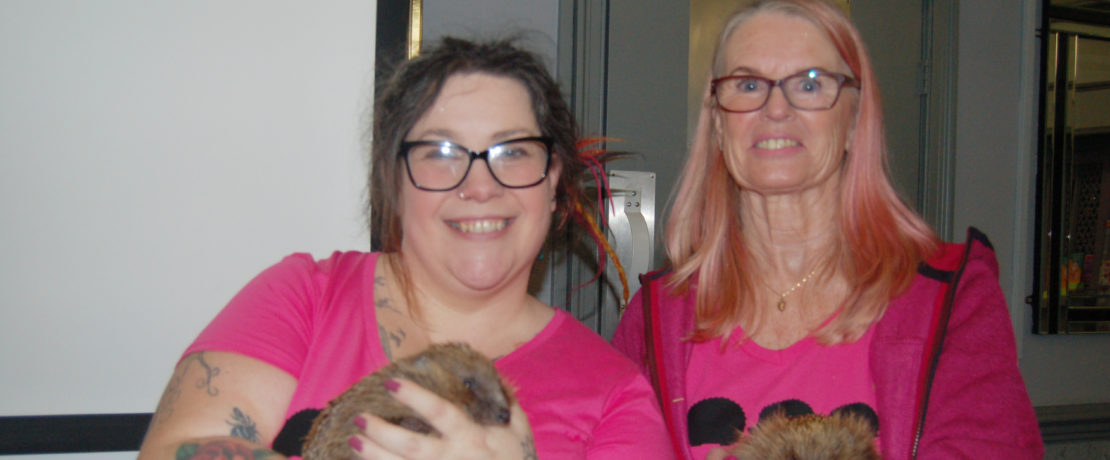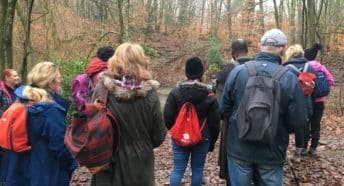Hedgehog talk: 28th May 2022, 2pm, Over Hulton
Thanks so much to Maz and Jayne of Hog Haven for talking to us about the vital work that Hog Haven is doing to save hedgehogs!
CPRE campaigns for a increase in the length and quality of our hedgerows, which provide a vital wildlife habitat and corridor in both urban and rural areas. Perhaps one of the most beloved residents of the hedgerow is the hedgehog – but this spiny mammal is under threat from habitat loss and road traffic, garden strimmers, chemical pollution, and many other things.
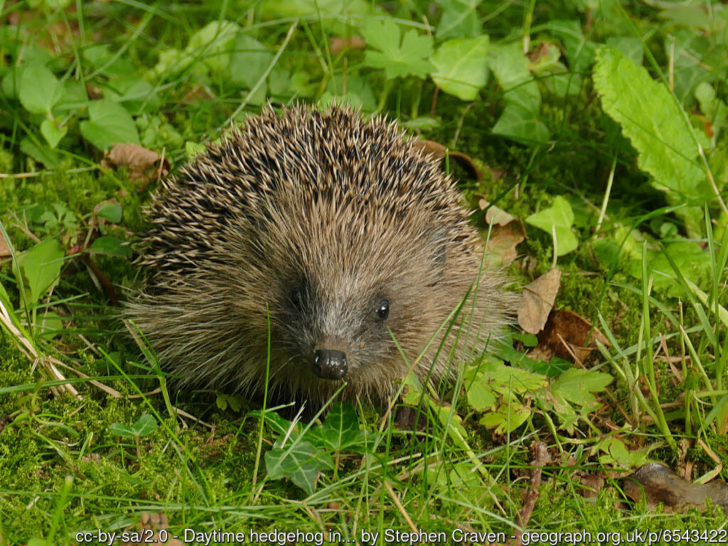
So it was of great relevance to hear about how a network of volunteers coordinated by Hog Haven works together to take in and rehabilitate injured and sick hedgehogs, before (whenever possible) releasing them into the wild.

We were delighted that an audience of around 60 people attended our talk, held at Over Hulton Conservative Club. Our Chair, Debbie McConnell, gave a brief introduction, and then handed over to Maz and Jayne of Hog Haven.
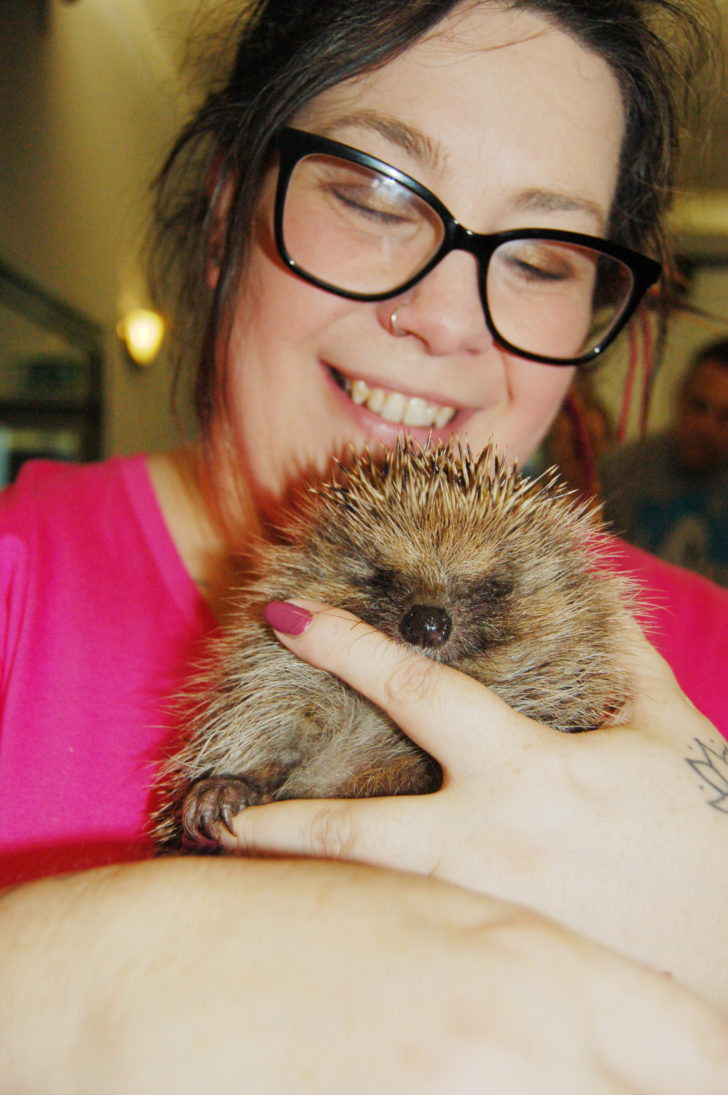
In her engaging and interesting presentation, Jayne covered:
- what to do if you see a hedgehog at night;
- what to do if you see a hedgehog in the daytime (they should never be out in daylight. If they are it is indicative of a problem);
- the types of injury or illness that cause them to be rescued- vehicles, garden tools like strimmers, forks and spades, eating the wrong food like too many slugs and snails, slug pellets, meal worms (which cause the hog equivalent of osteoporosis), dehydration or starvation, and parasites;
- how to work out what sex the hedgehog is;
- the treatment they receive to make them better, and which need to be carried out by the vets who support the charity;
- conditions that can prevent return to the wild – eg loss of a limb or blindness;
- average hedgehog lifespan is about 5 years. Females can give birth to up to 4 young. Only the female raises them. Males are bigger. They eat primarily insects and invertebrates eg worms and beetles. If you have visiting hogs, cheap dog or cat food/biscuits and a water supply are excellent. Bread, milk and mealworms should not be put out for them. They have excellent sense of smell and hearing but their sight is poor. They hibernate in late autumn/winter, going into torpor, so they regularly wake up and just shuffle around a bit before going back to sleep, their heart rate drops dramatically to single figures and they must be fat or a very good weight to survive until the early spring when they “wake”;
- Hog Haven’s need for funding – it costs them £100 per month to look after a hog. They have on average 70 at any time
The stars of the show, however, were the two spiny visitors brought along by Maz and Jayne, who are not well enough to be released into the wild. Everyone was delighted to meet them.
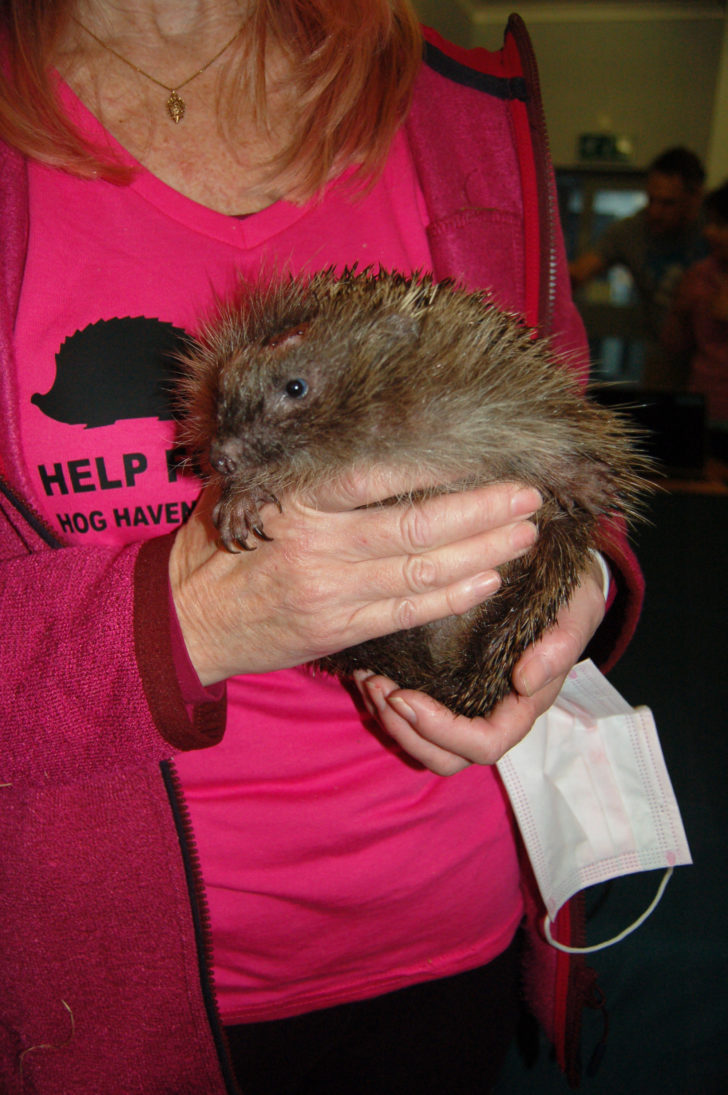
Attendees were also given copies of CPRE’s pocket hedgerow guide, ‘a little rough guide around the hedges’, which can be downloaded via the link below, and our Countryside Challenge activity booklet for children.
Download ‘A little rough guide around the hedges’
We would like to extend our thanks to Maz and Jayne from Hog Haven, as well as a huge thank you to Sandra Hesketh of HEART for organising the event for us.
Find out more about Hog Haven via their Facebook page.
